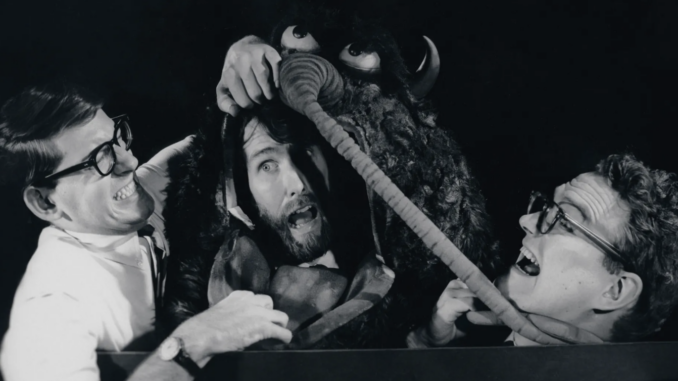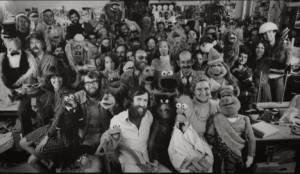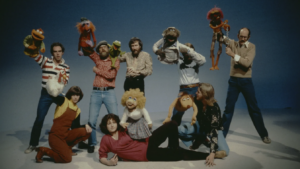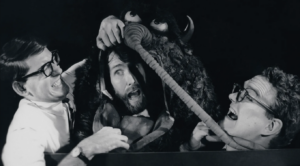
Ron Howard became a child star on “The Andy Griffith Show” and has an acting resume that also famously includes “American Graffiti,” “Happy Days,” and “Arrested Development.”
Howard also spent four decades as a director including comedies like “Night Shift” and “Splash”; blockbusters like “Apollo 13” and “The Da Vinci Code”; dramas like his Oscar-winning “A Beautiful Mind” and “Thirteen Lives”; and documentaries on Luciano Pavarotti and The Beatles.

But he has never before cut loose as he does in his latest documentary, “Jim Henson Idea Man,” which premieres on Disney on May 31. It’s a fitting tribute to Henson, the wild creative genius behind the Muppets, “Fraggle Rock” and “Labyrinth,” whose fanciful artistry gave generations of children permission and inspiration to see the world through his whirling imagination.
Howard’s film tells the story of Henson and his family and his colleagues while featuring clips that go beyond the classics, from Henson’s early ads and industrial films and the Oscar-nominated surreal short, “Time Piece.”
But he also uses stop motion, animation and syncopated music in ways that will evoke “Sesame Street” for many viewers.
Howard recently sat down for a video interview to discuss Henson as a person and an inspiration. This conversation has been edited for length and clarity.
Vista Murrieta baseball team uses big seventh inning to complete series sweep of Murrieta Valley
Director Ron Howard cuts loose in his latest documentary, “Jim Henson Idea Man,” about Jim Henson, the wild creative genius behind the Muppets, “Fraggle Rock” and “Labyrinth.” (Courtesy of Disney+)
Q. How did this come about?
As I was looking for my next subject, our Imagine documentary team let me know that while the Henson family has always been reluctant to have a documentary made about their father, they were open to conversations. George Lucas, who I am very close to, had always characterized Jim as a bona fide creative genius and was shattered when Jim died at such an early age. That’s about all I knew about Jim except how much his characters had meant to me and my family.
When I met the Henson family, two things were apparent. First, the way they were willing to talk about their father and mother was very enlightening; it was relatable but very specific. Then they showed me these archives that just cracked me up, I mean, nonstop laughs – black-and-white commercials that were so irreverent and industrial films that were satirical and sharp. Even his home movies looked like the counting films he would eventually make for “Sesame Street” that I remembered so vividly. So I realized that we really didn’t understand his restless creativity and the range of the output. And so I thought that along with the family story and the origin stories of his classic characters we could really offer some audiences something fresh. There’s a lot to learn and be inspired by just from understanding his creative path and the path he followed in his life.

Q. You directed this with a loose, wild energy I’d associate more with Henson than Ron Howard, such as using stop-motion when Henson’s fellow puppeteer Frank Oz is interviewed. Was that a conscious decision?
Definitely. With documentaries, you find motifs that reflect the character. I was very much informed by his short experimental film “Time Piece,” which was nominated for an Academy Award.
He was much more experimental and more whimsical than I’ve ever been and much more inspired by fantasy. Even my fantasies were very grounded in humanistic relationships and responses. So I did want to channel Jim; it was new territory for me and it was a fun opportunity because it was so appropriate. We hadn’t planned that with Frank Oz, but on the day of the interview I had the idea and Frank immediately knew what I was talking about and in 10 minutes we created a Jim Henson kind of moment.
Q. You’re a storyteller who I think tries, like Henson, to make the world a better place through your projects. Did that help you relate to him as a person or creator?
What I relate to is this excitement to create this idea and leading a team of people on an exploration of the possibilities of a story. I relate to and respect his desire to lead without bullying, to lead by example. But he is an outlier and his creativity is something that I wish I had more of. It’s just great to recognize that about him and recognize what it requires to deliver characters as memorable as Kermit or Ernie or Ms. Piggy or any of them.
Q. Was it difficult to find the balance between these flights of imagination and the family story?
The Jim and Jane story was so important. It really shaped their kids’ lives as you would expect, but it also informed the journey of the Muppets – even as their relationship was falling apart, Jane supported him in taking the financial risk of regaining control of those characters, which blew my mind. It’s poignant and the film is a reminder that this kind of outpouring of productivity and creativity doesn’t come for free. There are choices that are made and some create some discomfort and struggle.

Q. Now the most challenging question: Who is your favorite Muppet or other Henson creation? And you can’t say Kermit because that’s too easy.
Well, Big Bird is remarkable. You can’t take your eyes off Big Bird and in its own goofy way, it’s the most charismatic character of all, in my mind.
Q. I was an Ernie kid – he has that crazy but sweet energy and he’s always irreverently poking at rules and order, or Bert.
Yeah, I love that. Hearing the story of them as a comedy duo – Frank and Jim and Bert and Ernie – they’re like Laurel and Hardy or Abbott and Costello, so it was fun to shed light on that and for people to understand how those shows got made with the puppeteers squeezing into those places and dealing with pain and cramps just to express themselves through those puppets and entertain us through that medium.
